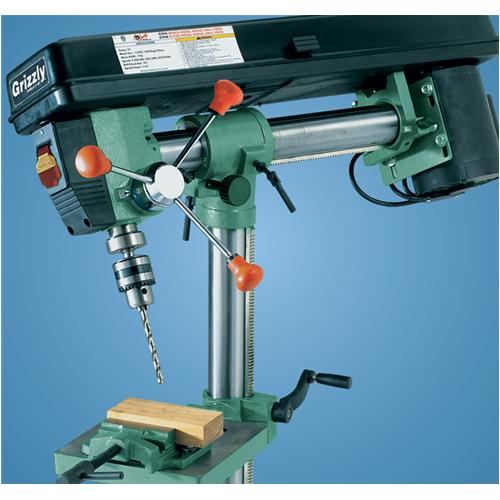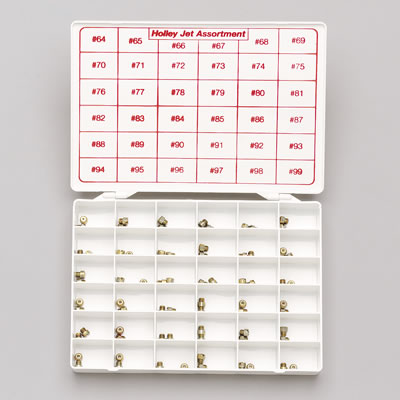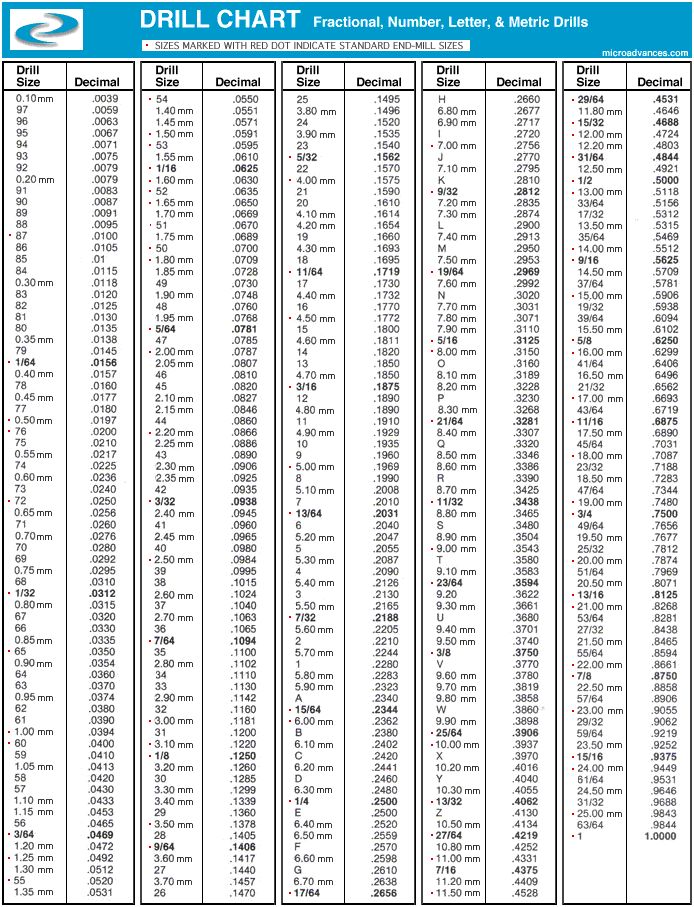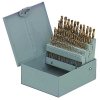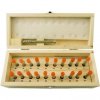I found this quite interesting to find out I could make my own jets. The cost would be considerably less than buying them and give another reason to buy some drill bits.
The quote below was posting by Madbill on speedtalk.
Having just gone through it, I will recount my procedure for fabricating jets and converting metering blocks. Hopefully the experts will chime in if I'm off base anywhere!
Build Your Own Jets
1. Get a box (50 for < six bucks!) of 8-32 x ⅛" brass socket head set screws from MacMaster-Carr or similar source http://www.mcmaster.com/#set-screws/=lpz9ow
p.n. 92991A188.
2. In a drill press, drill and tap a flat scrap of metal to 8-32, making the thread quite shallow so the set screws will bottom out rather than spinning right on through when you drill them.
3. Run a set screw down snug in the hole.
4. Find a pin vice with a straight shank that can be chucked in the drill press and use it at high RPM with a good drill/tap fluid to drill the set screw to the desired size*. (The recessed socket head serves to center the bit.) *verify diameter with a mic or dial caliper, they are often mislocated in the drill index and/or off-spec.
5. If you don't have and don't need a full set of number drills, most industrial fastener outlets will sell individual quality ones, although they may have a minimum charge, maybe $10, so this would be a good time to stock up on hacksaw blades or whatever. (My number drills are crap quality, so I use a good fraction bit first then 'ream' to size with the number drill.)
6. It shouldn't be a problem for gasoline applications, but the socket hex in an 8-32 screw is just under 0.090" across the points, so the maximum diameter must be enough less for the Allen key to get a grip.
7. I haven't yet done it, but my plan is to flow test my jets and discard any outliers. I have drilled and tapped a short length of steel tube and will screw the jets in (backwards, so the flow will be in the direction seen in service) and connect it to my 100 CC burette.
8. Plan 'B': Buy what sizes you need from Holley or one of the specialty carb shops for up to $5 each and then you don't have to worry about calibrating jet flows.
Savage Your Metering Block(s)
1. Clamp the block in a machinist's vice, with the snuggest possible fit number drill shank-down in one of the P.V.C.R. holes.
2. (I was a little A-R here, but better that than sloppy!) Use a digital angle finder to adjust the block position so that the drill bit is perfectly perpendicular to the drill press bed. (Alternative: Chuck the bit shank-out in the pin vice and adjust the block alignment until the drill drops smoothly into the P.V.C.R. without binding.
3. Mark the depth of the P.V.C.R. passage on the drill shank and transfer the measurement to the bit in step 4.
4. Drill with the correct tap drill for an 8-32 thread (#29 is specified, but a 9/64th is only a few thous larger and will work fine), being careful to not damage the block by going deeper than the above measurement.
5. Clamp an 8-32 tap in the drill chuck and, using tapping fluid, gently feed it into the hole while rotating the chuck by hand. If desired, once it is started the chuck can be loosened and the job completed with a tap handle. CAUTION: Start shallow and deepen if necessary; ideally the jet should seat on the thread runout with its head only a little below the surface of the PV recess.
6. Thoroughly blow out the well with compressed air, brake cleaner, etc. to be certain no shavings remain.
7 Repeat on remaining P.V.C.R.s
Calibrating Your Way to Double-Digit Fuel Economy in your 4.88:1, high stall 502
1. Ideally, the primary main jets should be reduced by road testing until lean surging or other unacceptable conditions develop at higher cruising speeds (low speed cruise is largely determined by idle and off-idle mixture), then stepped up a couple of sizes.
2. Next, the P.V.C.R. jets should be juggled to obtain desired WOT fueling, if necessary supplemented by small changes in the main jets.
3. CAUTION: With up to four variable jets each controlling primary and secondary AFR, It's really easy to lose track of fuel flow distribution! If at all possible, get the engine or at least the carb on an engine dyno and verify similar P & S fuel flow (for square carbs) or AFR (for carbs that are not symmetrical P to S)



